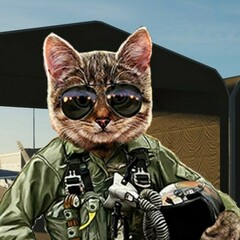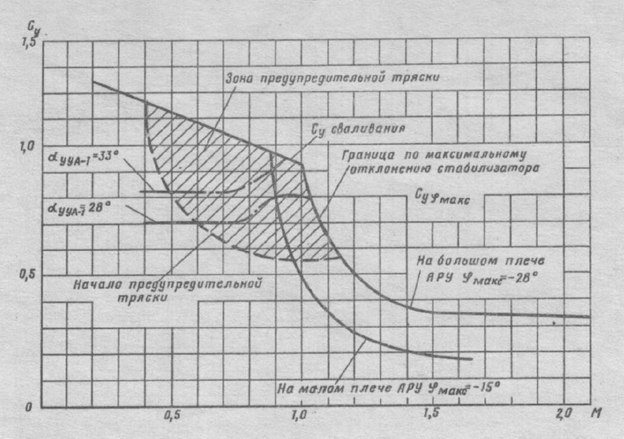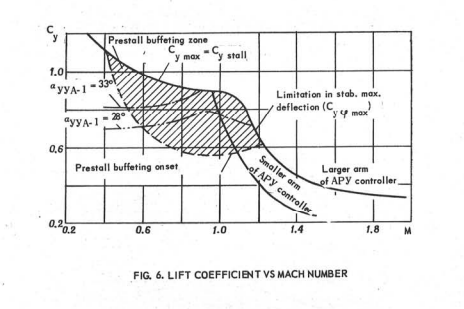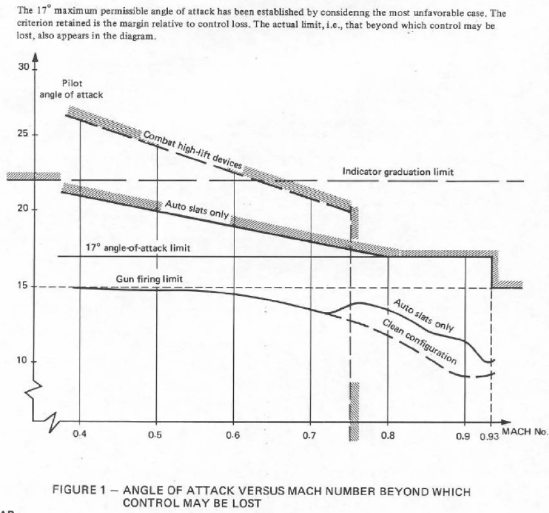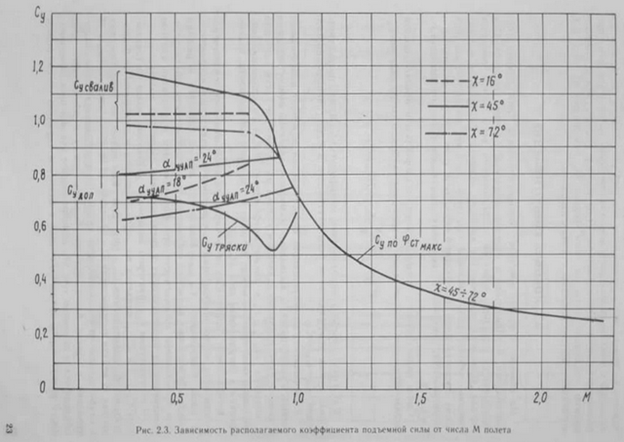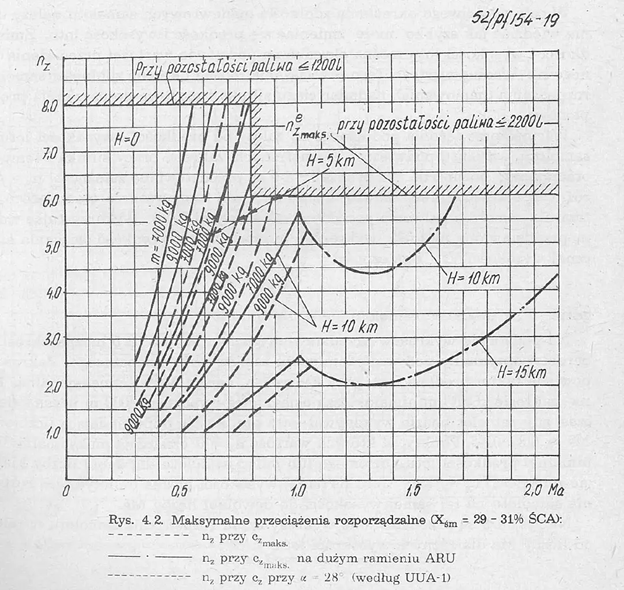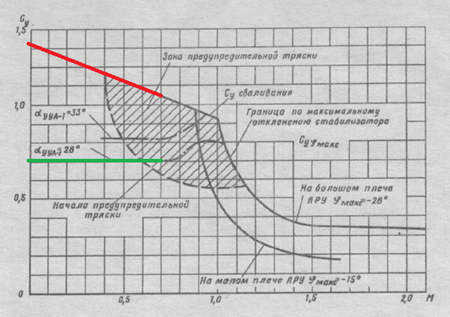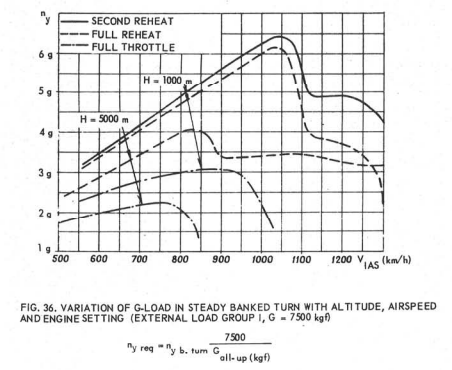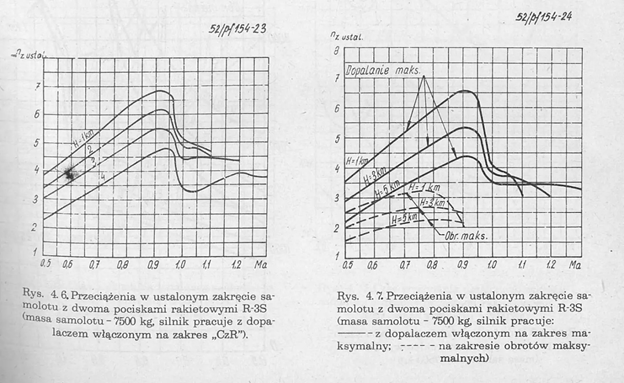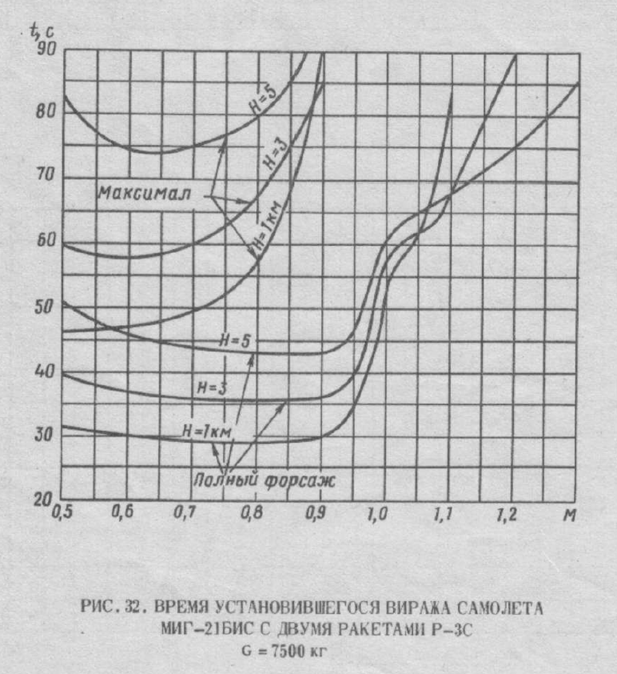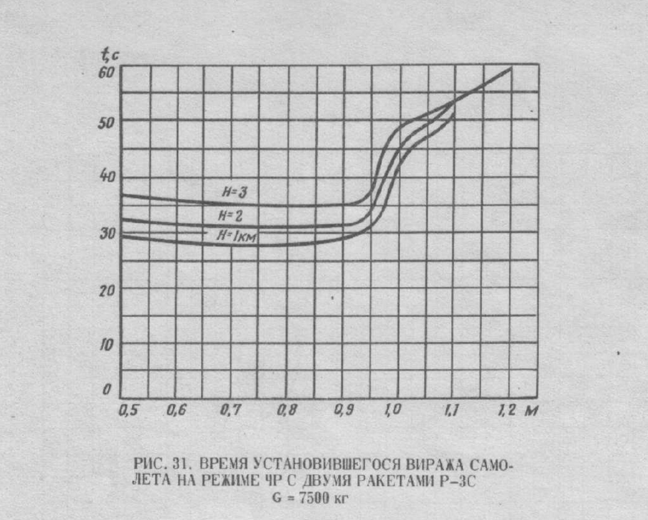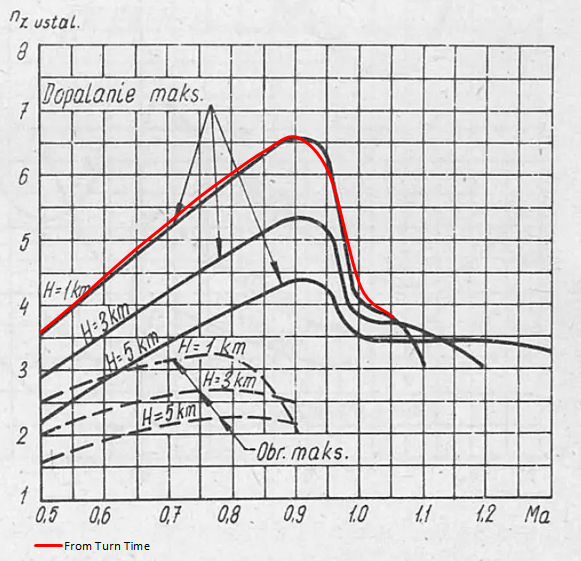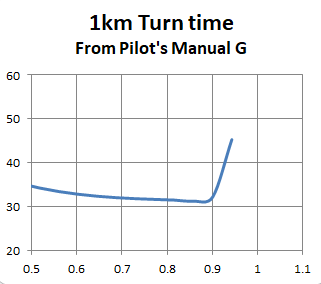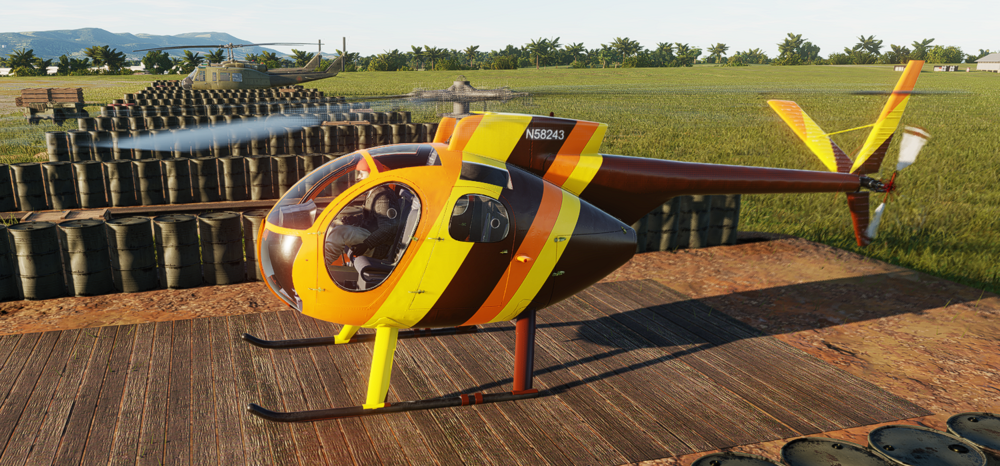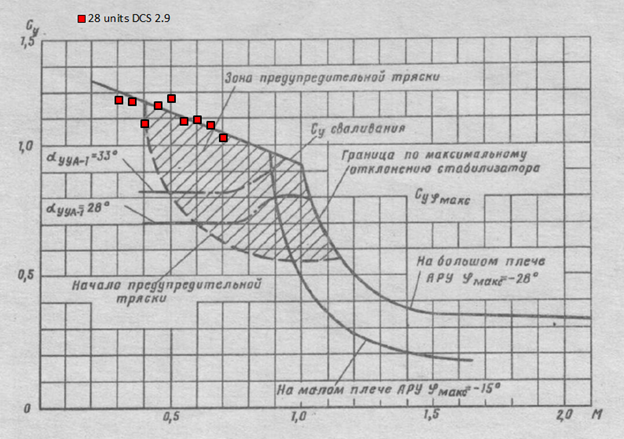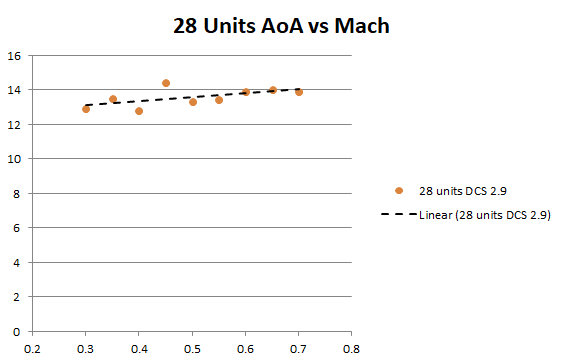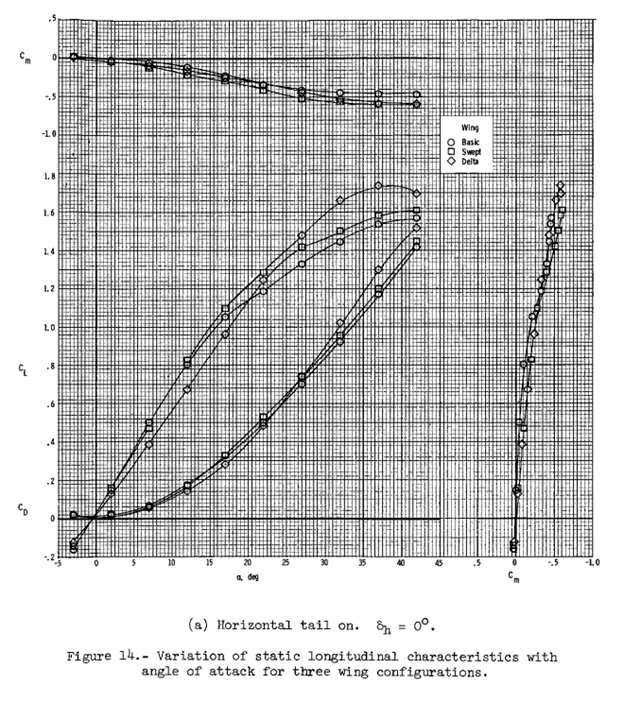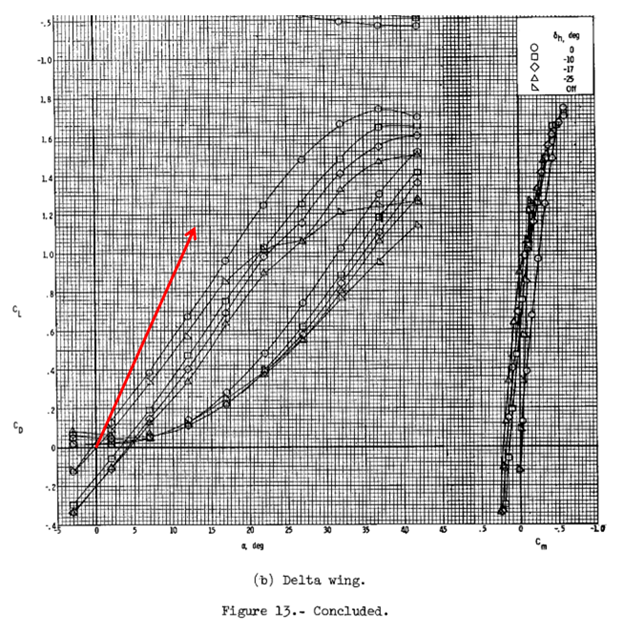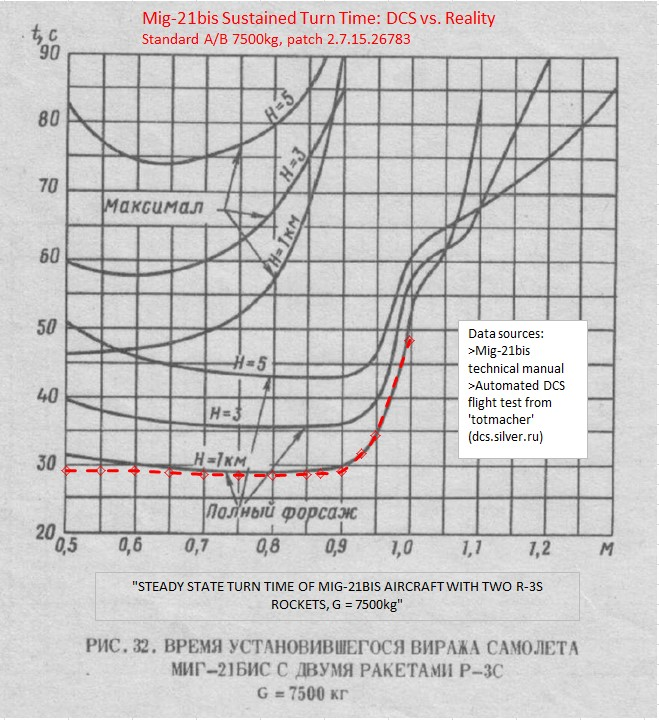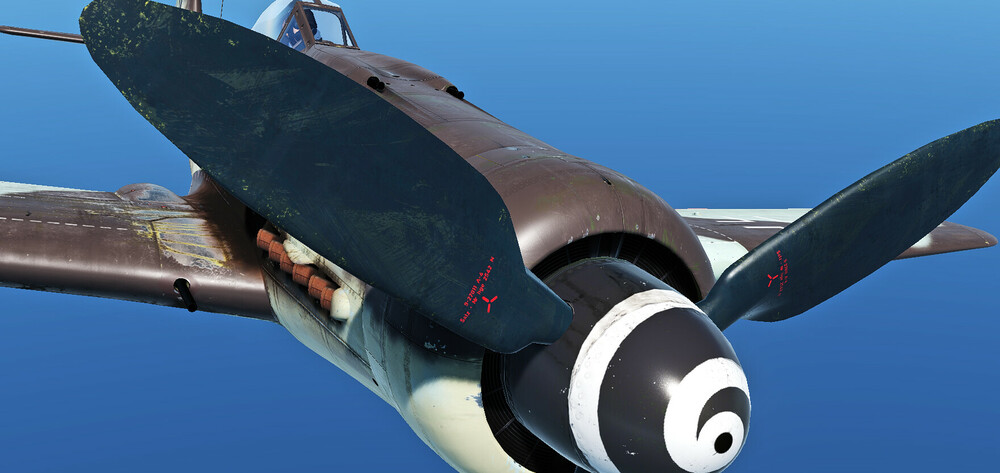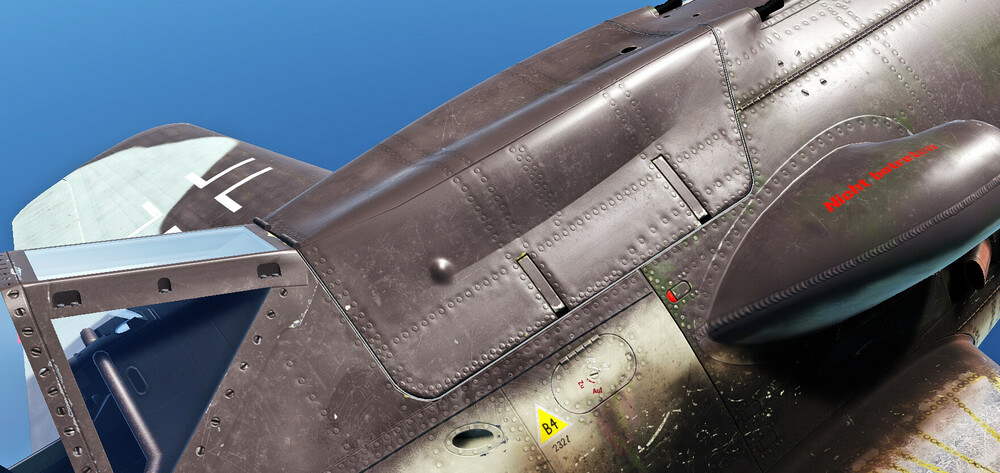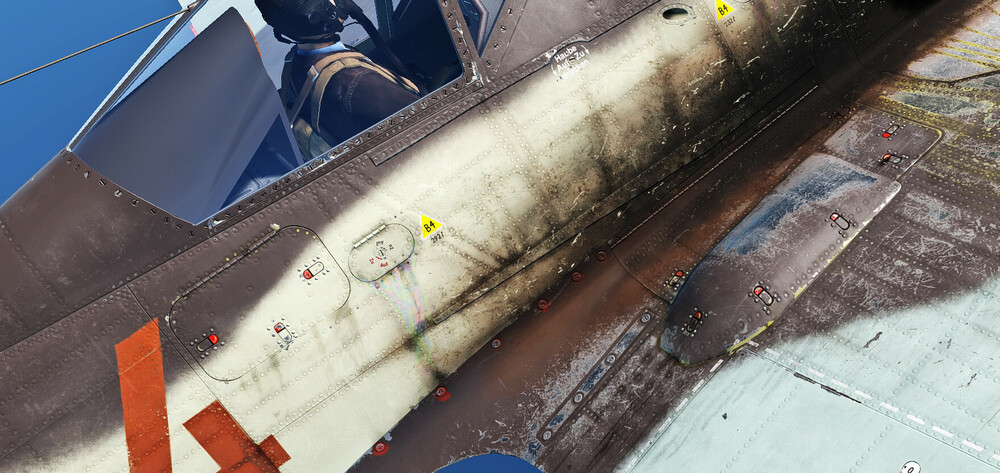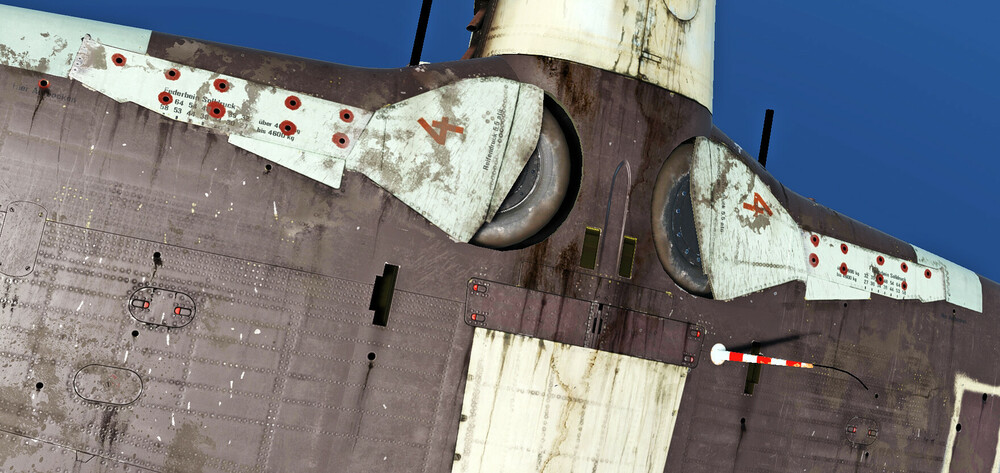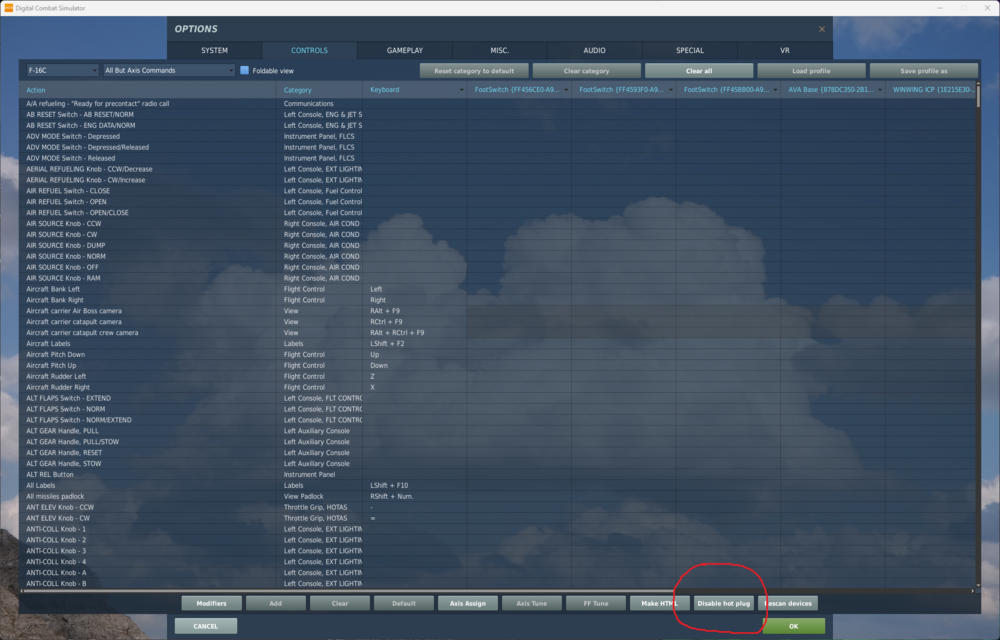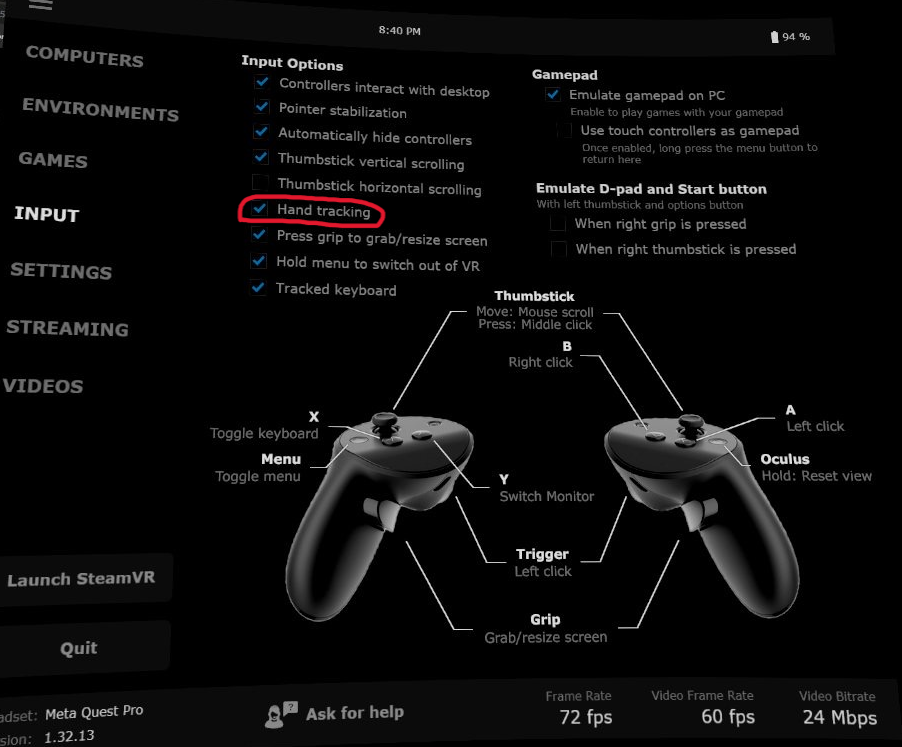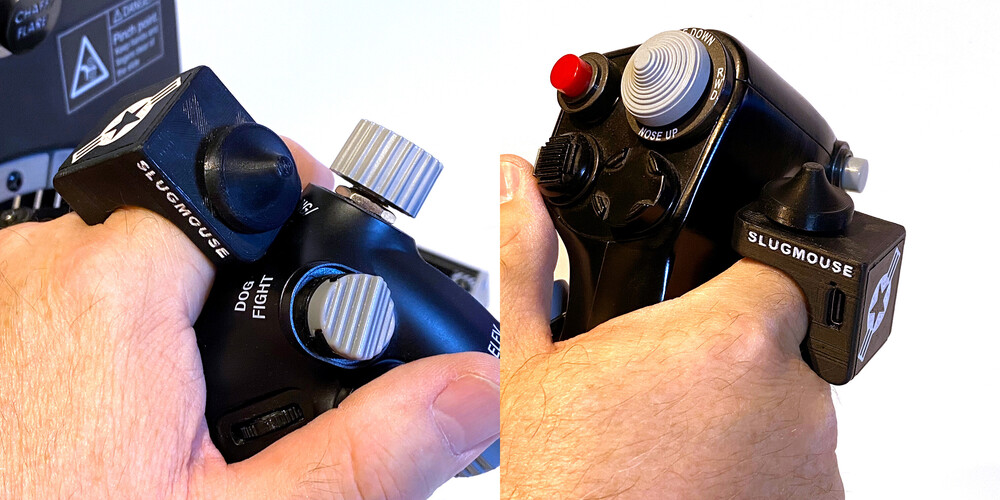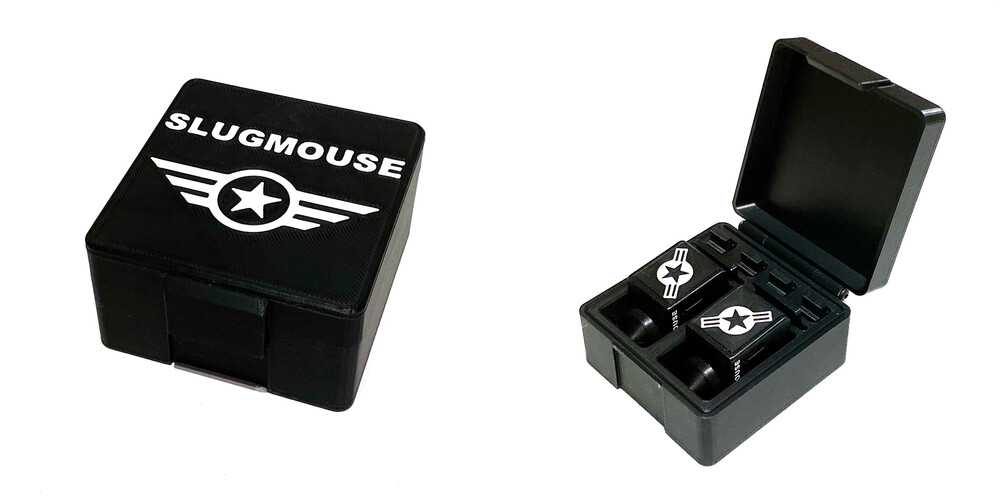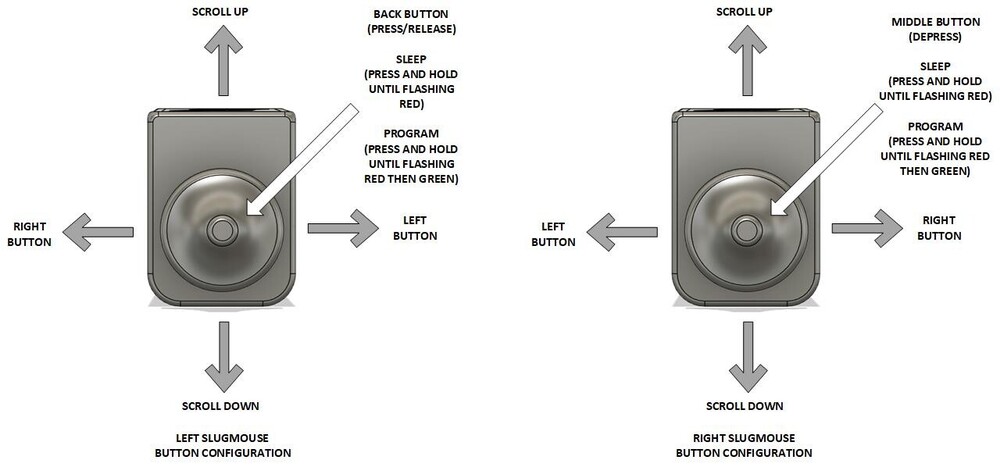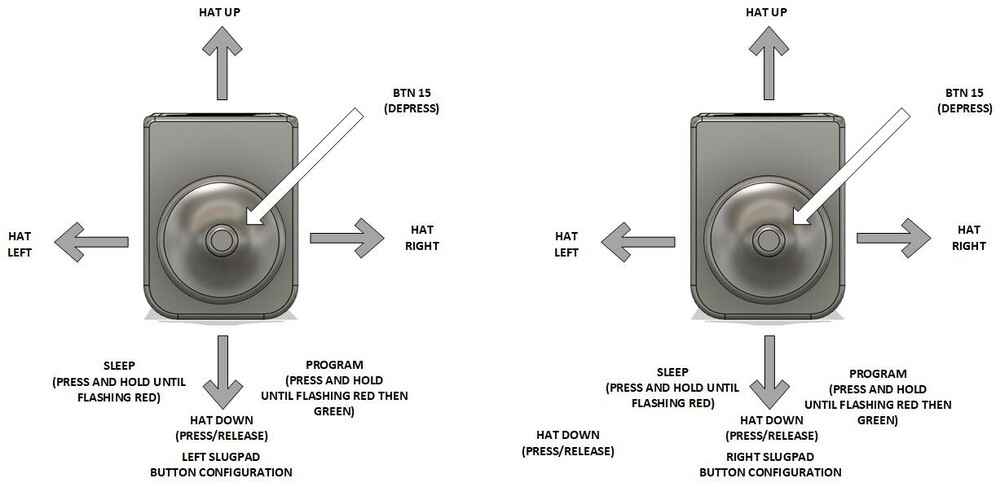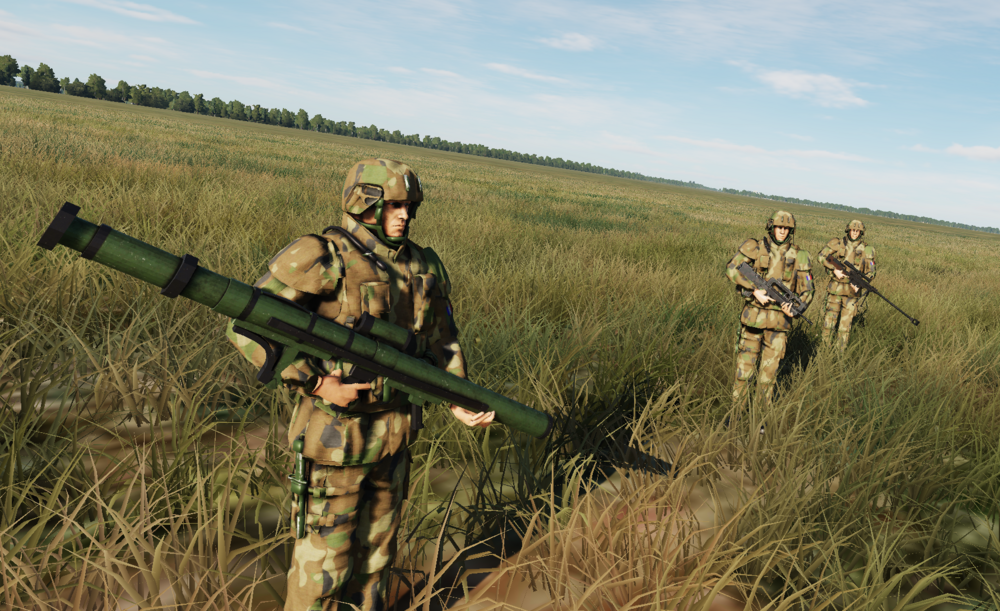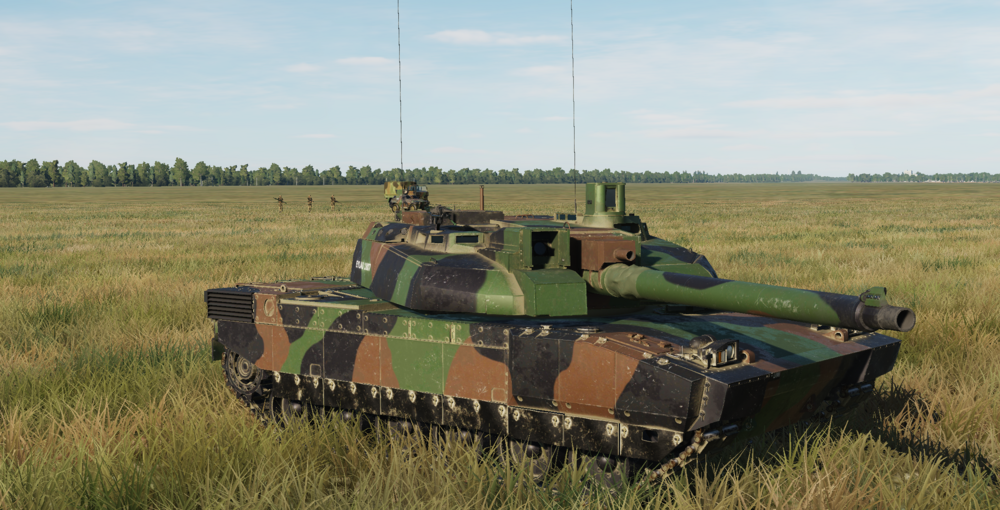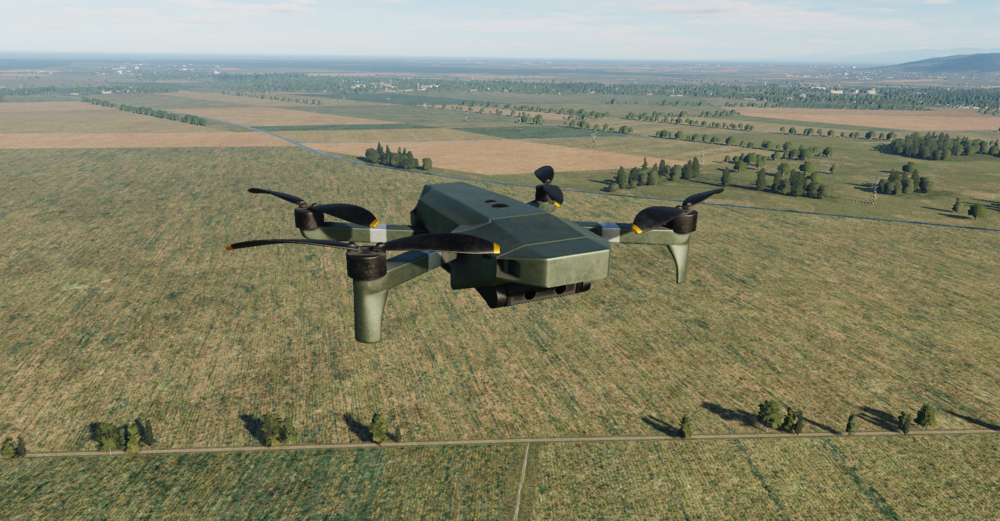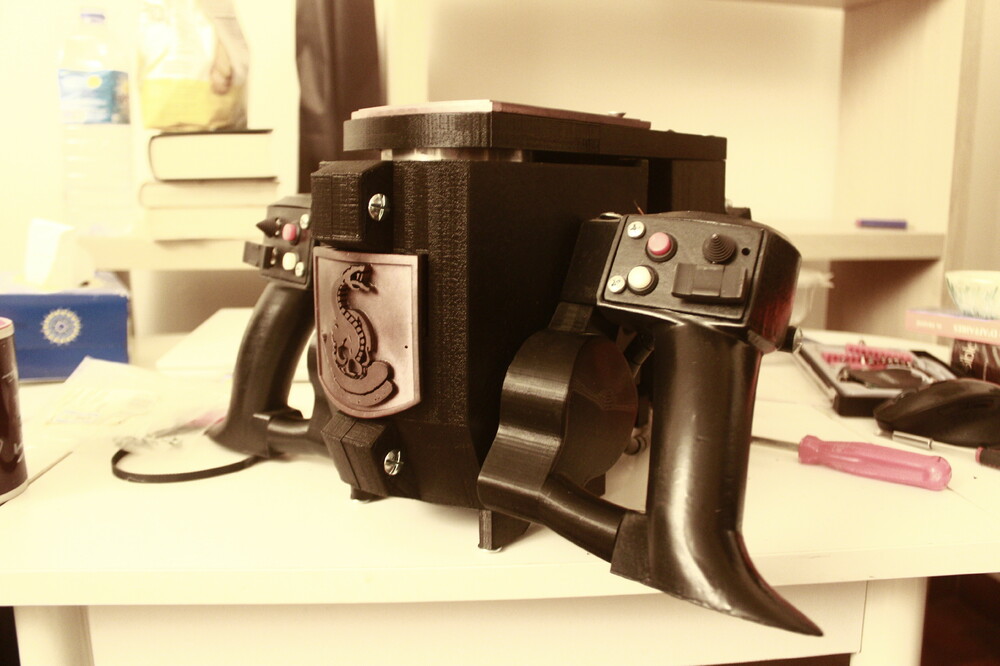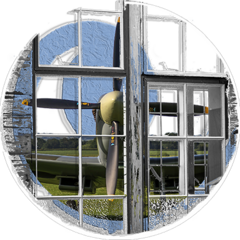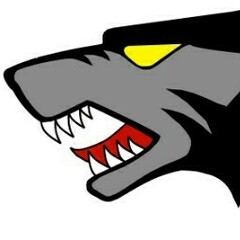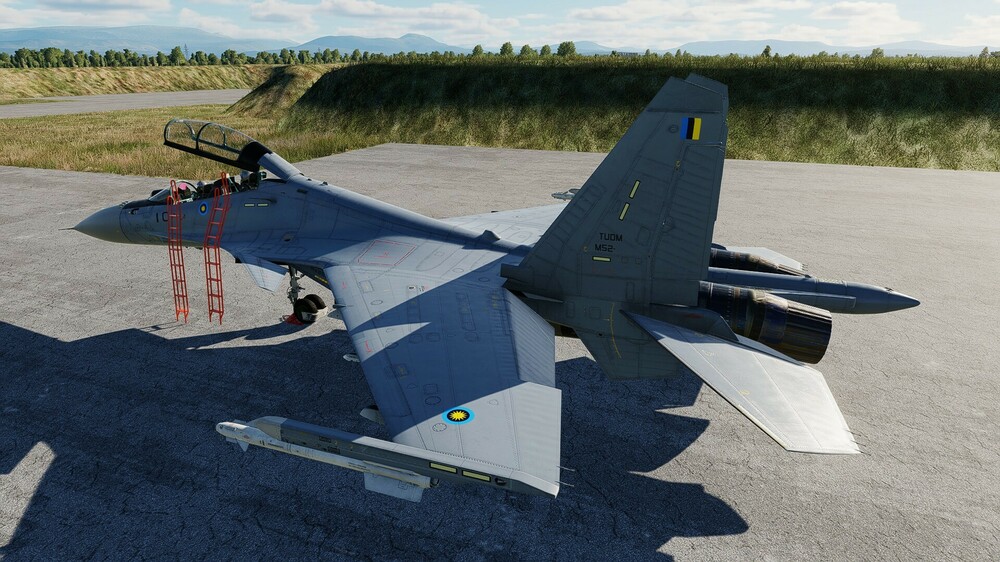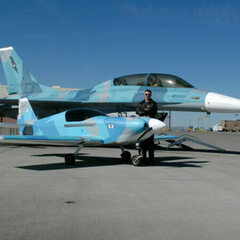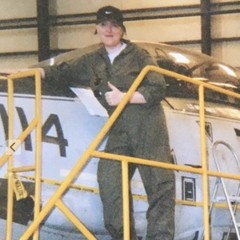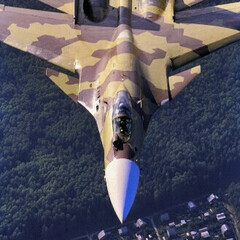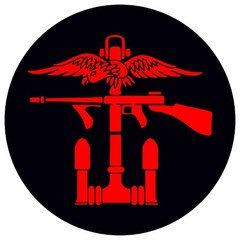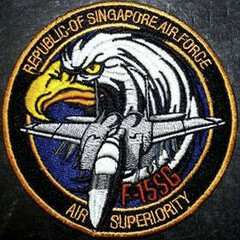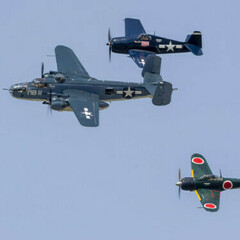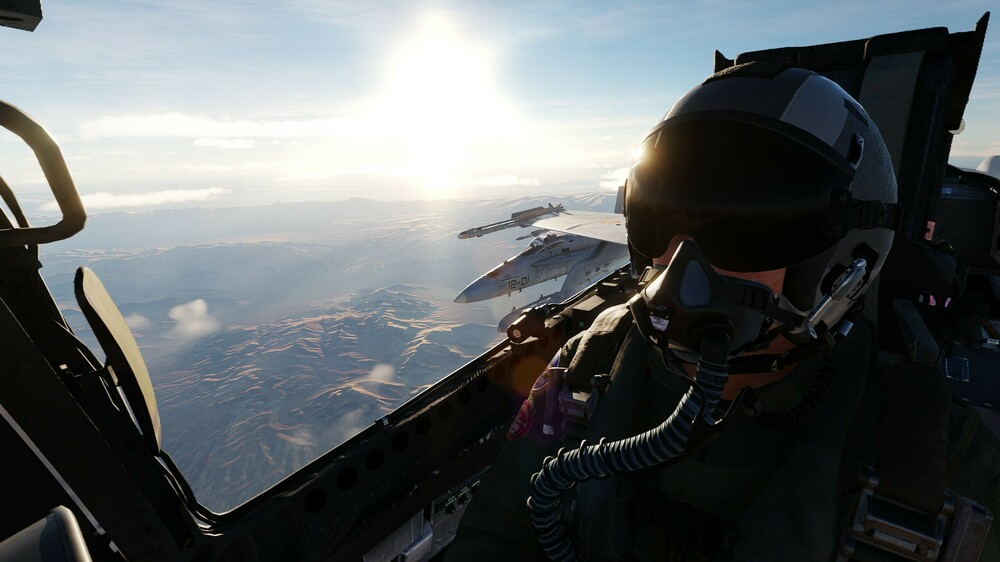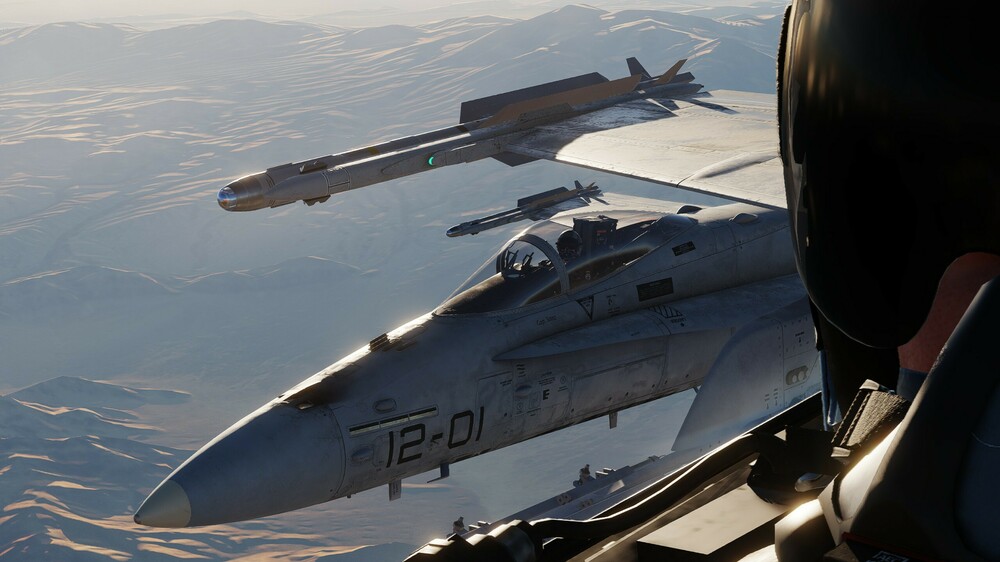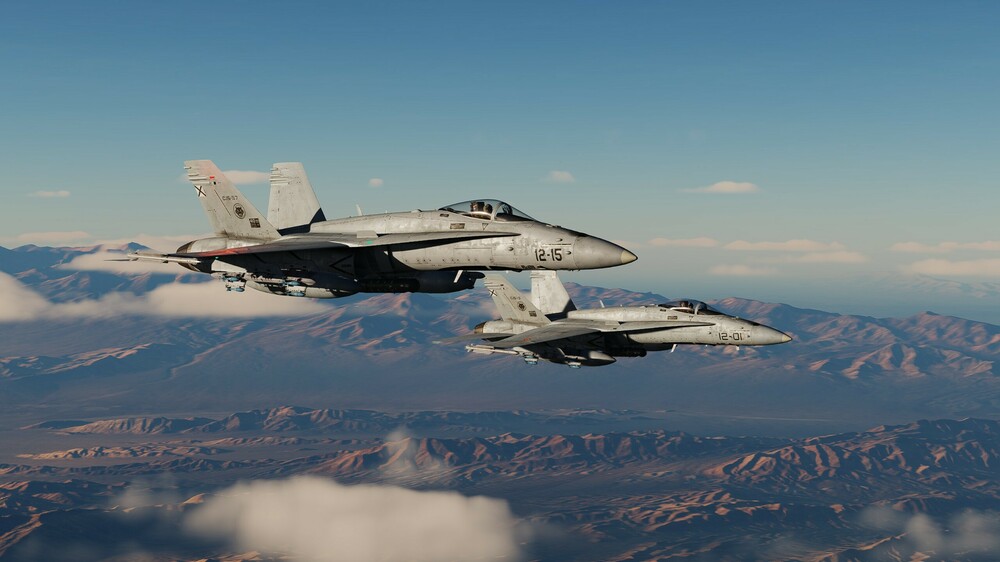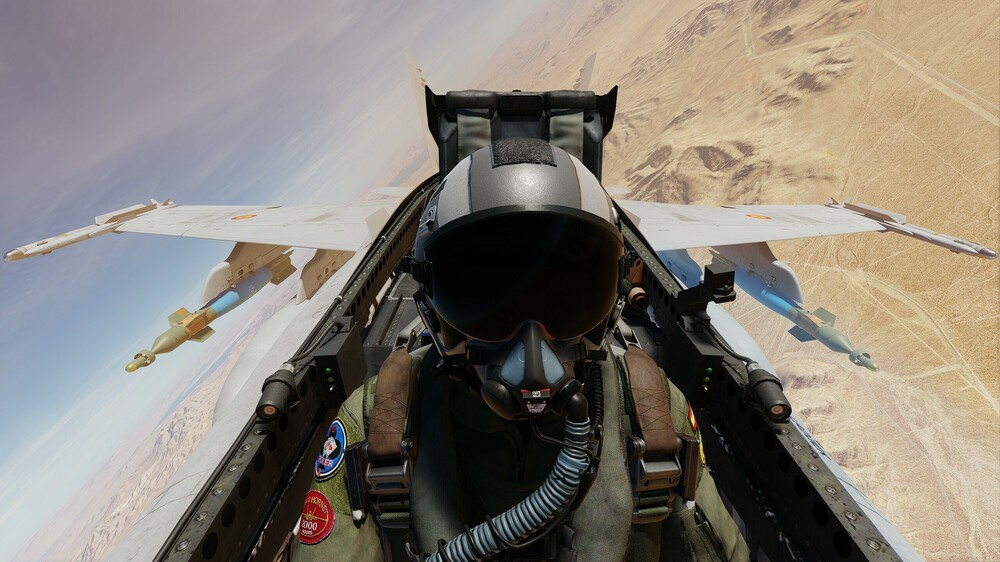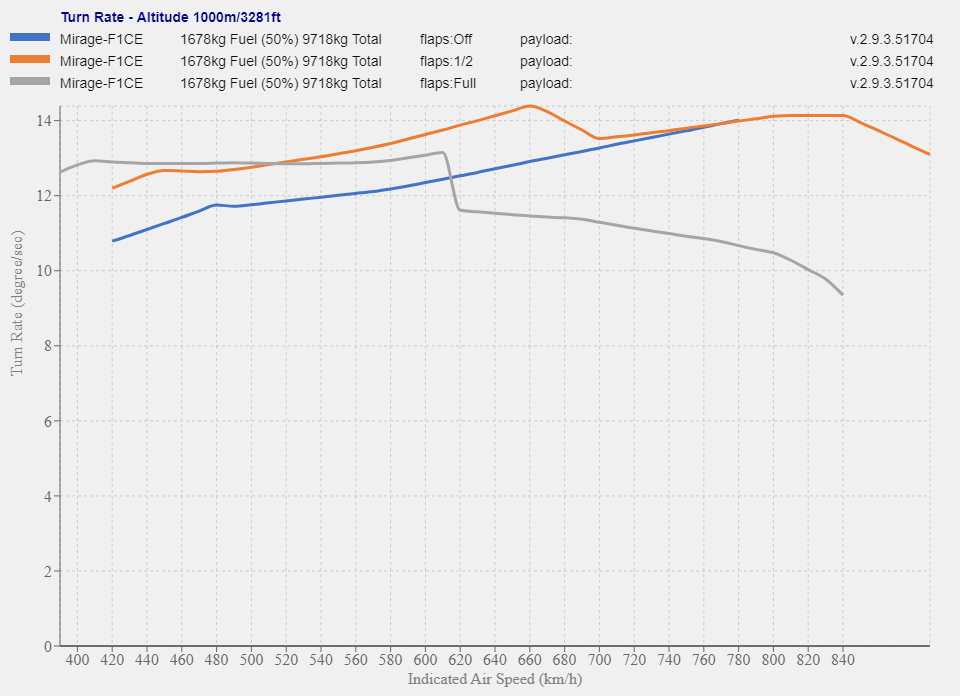Leaderboard
Popular Content
Showing content with the highest reputation on 03/04/24 in all areas
-
8 points
-
I finally got around to trialing the MiG-21 recently and was not surprised to find some issues with the flight performance model; they have been discussed before many times and various data has been shared. With that in mind, it was odd to hear through the Discord grapevine that Magnitude 3 does not believe there is enough evidence to show anything wrong. Maybe that was a miscommunication, or maybe the good data has been lost in years of noise on the topic. Therefore I have made an attempt to summarize the key points in one place. This will take some time to explain, because the data available in the public domain is confusing and sometimes appears contradictory. It takes careful comparison along with some calculation and context to sort out what is real. For that reason this manifesto report will be split into three parts: What real world data is available in the public domain, and what is useful. What in-game data can be easily measured, and how it compares to those real world sources. My opinions on what it means for the game (I will try to keep this last part short) Part One – the manuals: Unlike some other contemporary fighters, there do not seem to be any flight test reports or “practical aerodynamics” textbooks in the public domain for the MiG-21. Fortunately many operational manuals contain some level of useful aerodynamic information. The ones already available on the internet for the -21bis include: Soviet technical description manual Polish technical description manual Pilot’s flight manual in Serbian (for Yugoslavia), English (for Arab states), and Polish Throughout these manuals there are four key charts repeated which are relevant to a discussion of turn performance. Coefficient of Lift, Available G Sustained G Sustained turn time Unfortunately the same chart does not always agree between manuals. However by cross-examining the various documents we can rule out some obvious miss-prints, and establish which charts are useful. To enable this cross examination, it is important to realize that these four charts are really only two sets of data, with each pair of parameters related by well-known equations: Normal acceleration ‘Ny’ = (CL * Aref * .5 * ρ * v2)/(m*g) Turn Time = 2π / (sqrt(Ny2 – 1)*g/v) Let's start with CL, because is the most basic property of the four. Fortunately the different MiG-21 manuals all basically agree on this one. The relevant graph gives non-dimensional lift coefficient versus angle of attack in arbitrary units. These units are not really degrees, but some function proportional to the true angle of attack. The flight manuals do not specify exactly what that function is. Tech manual version: Pilot’s flight manual version: The hand-drawn lines are slightly different between versions, but they show the same two expected trends: Coefficient of lift is almost constant for constant AoA, until compressible flow effects become significant around M0.7 This is expected by definition of CL as a non-dimensional coefficient valid for incompressible flow. Maximum lift increases at low speed with increasing AoA of stall. For fast jets (unlike "normal" aircraft) 'stall' is often a function of loss of stability, sometimes combined with a limit of horizontal tail effectiveness. Loss of stability does not normally correspond to a fixed AoA. In other words, both of these trends are the expected behavior for a supersonic fighter with a low aspect ratio wing. To emphasize that this is the expected behavior, here is a similar plot for a similar jet (Mirage F1) with AoA on the vertical axis. Note that just as the MiG-21 manual quotes 33 units as the stall AoA, the Mirage manual quotes 17 units. On both aircraft the true stall AoA is higher than the quoted limit over most of the envelope. Now also the same plot for the MiG-23. With wings swept (45 and 72 positions) the coefficient of lift increases slightly as Mach increases for a fixed AoA. The line of maximum lift is not tied to a fixed angle, and instead increases with decreasing speed. All this is just like the MiG-21. Charts for other aircraft are obviously not directly relevant to the performance of the MiG-21, but I include them because it is important to have context for what is normal and plausible. Next it’s time to compare graphs of available G, which should all agree with the Cl figures. Unfortunately this is not quite the case. Pilot’s flight manuals show only 28 units AoA: Polish tech manual shows two unknown lines. The chart legend mentions 28 units and maximum lift, but they are unhelpfully both dashed lines, while the chart uses one solid and one dashed line. Helpfully enough the dashed lines do match the solid lines for 28 units in the pilot’s manuals seen above, which suggests that “CZmaks” was intended to be the solid line in this drawing. It would be nice if the Russian language tech manual clarified this for certain, but sadly it does not. The lines are clearly the same as the other versions, but the legend is reversed with 28 units now shown above the ‘maximum’! Something is wrong, but how to tell for sure which version is correct? The next step is to convert CL to G and see which version the CL plots match. I will use the tech manual chart mostly because it is linear which makes things easier. Red line at maximum lift CL = 1.32 – (0.4*M) Green line at 28 units is a constant CL = 0.7 Lift calculated from those CL at sea level standard conditions and 23m2 reference area overlays perfectly with the lines in the manuals, only the labels for “28 units” and “maximum” are reversed in the Russian-language print. The green line also matches the one labeled “28 units” in the pilot’s flight manuals. Considering that the CL plot agrees between all manuals, that it agrees with the plausible expectation set by other jets, and that the pilot’s flight manuals all show lift at 28 units matching the CL plots at 28 units, there is not much ambiguity left. Whoever drew this legend by hand in the 70s flipped the label of the lines by accident, just like the draftsman of the Polish manual accidentally drew different lines on the plot and the legend. Drafting errors are common in old technical documents, and context clues are the key to resolving contradiction. Keeping the possibility of mistakes and contradiction in mind, it’s time to look at sustained turn performance. All the manuals provide sustained G charts for both standard afterburner and emergency afterburner at 7500kg with 2x R13 series AAM. Pilot’s flight manuals: Tech manuals: This new discrepancy is obvious right away. The tech manual shows around 6.5G peak for standard afterburner, while the flight manual shows 6.5G peak for emergency afterburner. The other lines are all similarly offset. To get more context we can try to cross-examine against the sustained turn time plots, although they only exist in the tech manuals. Here are military (dry) thrust and standard afterburner: And emergency afterburner: For comparison I digitized the 1km line for standard afterburner, converted from turn time to turn rate, and then turn rate to sustained G force in the flight path axis using the equations mentioned above. It matches quite well. For the pilot’s manual charts, there is no turn time to overlay against, but we can compare the shape at least. To enable that I digitized the sustained G chart in the pilot’s flight manual, and converted that into turn time. There’s no point overlaying this with the tech manual because we already know the best turn time will be different. However it does show the same trend versus speed, shared with all other supersonic jets. The best sustained turn performance occurs at a relatively high Mach number, degrades gradually below that, and then more quickly at low speed. It’s unfortunate that the sustained turn graphs disagree in absolute value, but to some extent I don’t really care because the purpose of this analysis is only to establish what is plausible, not what the exact values should be. What really matters is the shape of the curve, or in other words which speed the aircraft performs best at.8 points
-
Part Three – Conclusion: Here I will editorialize a bit. Without seeing the lift, drag, and thrust models used inside the flight model, it’s hard to tell if the incorrect CL curve and the incorrect turn-time curve are related. Either way, they both need to be fixed. In absolute terms the maximum lift is a bit too high, but that is not the problem I’m concerned about. The virtual pilot does not ‘feel’ it. What is immersion-breaking once you notice it is a jet with a small, low-aspect ratio wing generating peak lift at 15 degrees of AoA or less. Those are straight-wing propeller plane angles. Additionally, the way CL increases at low speed reduces the normal variation of AoA with speed. Practically speaking that will degrade the responsiveness of the aircraft when the pilot tries to control airspeed correctly with AoA, especially on landing approach. I think there is a reason so many DCS players struggle to make stabilized landing approaches in the -21. Likewise the steady turn rate being slightly too high is not the main problem. The main problem is the shape of the curve. On the real MiG-21, slowing down below M0.5 decreases performance. On the simulated MiG-21 right now it does not lose any performance, and experienced players know to hold AoA in the red and slow down to stall speed for maximum turn rate. This becomes almost a complete inversion of reality when thinking of tactics and flying technique. I don’t want to beat a dead horse much longer, but it’s worth saying again that there is not even one supersonic jet known to behave this way. There are too many diagrams to show here and many of them I am probably not allowed to post. Instead I will just list the fighters that we either see in DCS or know from public data do not turn faster at minimum speed, and leave finding the charts I am looking at as an exercise to the interested reader: MiG-19 MiG-23 MiG-29 Su-27 F-4 F-5 F-8 F-14 F-15 F-16 F-18 F-20 F-100 F-104 Mirage III Mirage F1, Mirage 2000 JF-17 Draken Viggen That is a long list, but alone does not mean the MiG-21 cannot have a second turn rate peak at its stall speed. What is does mean is that this behavior is only believable if specific data backs that up. The specific data we do have does not. Lift_uua_28_clean_2.trk Fishbed_sustained_7511_r3s.trk7 points
-
5 points
-
just to add, we have asked the team to add wheel chocks for cold and dark aircraft.5 points
-
I disagree. A server admin should be able to set the same conditions for all players and be able to set them the way the mission is intended to be played. If server admins don't know about the setting then just tell them about it.5 points
-
Part Two – DCS: With a basic grasp of the real-world data, it is time to look at the behavior of the MiG-21bis module in DCS World. Let’s start again with coefficient of lift. This is straightforward enough to measure. Perform a decelerating turn at constant AoA, record the altitude, TAS, and G-force at a few different speeds, then calculate CL at each point. My result is not as clean as it could be, but it says all that needs to be said. I’m confident this is accurate because it matches what several other forum members have measured in the past. In very simple terms, the lift at 28 units indicated AoA is swapped with the line of maximum lift, just like the chart in the Russian language tech manual. According to all the evidence from part one, this is not correct. 28 units is not even the maximum lift in-game. There are two possible explanations: The ratio of indicated AoA units to true AoA degrees on UAA-1 in the DCS MiG-21bis simulation is not constant and increases rapidly at low speed. The parameter of lift vs mach in the DCS MiG-21bis simulation is not correct. The first possibility can be quickly eliminated because the ratio of AoA units to degrees in-game currently decreases slightly at lower Mach numbers. Here is my measurement at 28 units. Other forum members have measured this in more detail. At low speeds, this is about 13 degrees of true AoA generating CL of at least 1.15 --- an extremely steep lift curve for a wing with an aspect ratio of about 2.2. How steep is 1.15/13 exactly? There is no wind tunnel data easily available for the MiG-21, but we can sanity check this against abstract literature, or other delta wing designs. Fortunately NASA makes this easy. They reported on a scale model test in the 1970s comparing the F-5A wing with some other planforms (https://ntrs.nasa.gov/citations/19740018330). More specifically, they tested an un-cambered tailed delta wing with AR=2.1, and a swept wing with AR=2.8. While the report does not say “Fishbed” or “Phantom”, just take a look and judge for yourself what they were thinking of (in 1974 America): The real MiG will vary slightly from this proxy, but not by much. Here is the CL NASA measured for each wing: Remember what I said about drafting errors? Fortunately NASA only connected two dots incorrectly, and the legend is correct as confirmed by other pages of the report. Here is the page for the delta specifically. I have added where the DCS MiG-21 lands. It is over 60% steeper, even assuming the chart in the MiG-21 manual represents tail installed but without deflection. Notice also that the test CL at 13 degrees is 0.72, just about equal to what the manuals claim for 28 units. Coincidence? Maybe. This is only one data point, so it’s also good to sanity check with the expectations of abstract literature. Fortunately delta wings are very well studied, and at this point almost a standard teaching aid for wind tunnel tests. Using the Polhamus model for vortex lift (https://ntrs.nasa.gov/citations/19670003842), I get CL(15deg) = 0.76 for AR=2.1. That matches perfectly to the line for δh = “off” in the chart above. The lift curve of the DCS MiG-21 is simply not plausible. CL/deg of 0.09 belongs to a completely different category of wing. One might reasonably assume that an implausible lift curve slope will result in other implausible behavior. In other words, it’s now time to look at sustained turn rate. This module is quite famous in the multiplayer PvP community for sustaining its best turn rate at minimum speed, but proponents often point out that the real sustained G charts do not go down below 0.5 Mach. True enough, but really beside the point. We can look at the turn time chart and see the problem without extrapolating anything. To illustrate, I’m going to borrow data from the extremely useful compilation of automated testing by @totmacher at dcs.silver.ru. I hand-flew some tests before my two week trial ran out to sanity check that the extreme low speed performance is not an artifact of the automated testing. A .trk is included, but the precision of the automated test is simply far better than what hand flying can achieve. If more data is really needed to illustrate the problem, I know some other community members have been collecting extensive hand-flown data recently. Now here is an overlay of that automated test against the tech manual turn-time chart for standard afterburner at 1000m altitude: Turn rate at higher speeds matches OK (probably this is where it was validated in development). To see the real problem, just look at the slope of the curve at M0.5: The turn rate of the real aircraft is slowing down The simulation is not We also know that the turn rate even gets faster (turn time goes down) below that speed in the simulator, but it’s not necessary to look there when the problem is already evident. Showing data from in-game below the minimum speed of the IRL plots seems to generate a lot of controversy for some reason, so I am avoiding that.5 points
-
Those JaPo books opened a can of worms. The prop blades were primed with the infamous RLM99 (fictional) green-yellow primer. Many paints used were very deluted and thinly applied due to the progression of war and its shortcomings. I tried to implement this, but for some technical stuff ive omited this, but applied it to eg, break up pattern on the wings and brushstrokes on the prop blades. Also added some small details to the gun cowling and a forgotten detail on the bottom. A grove for the ETC rack. The normals for the gun covers on the wings were also modified to pop a bit more. Red markers on the push buttons were painted red. Albeit late war doras often had the bare minimum of service markings applied i just added it for <profanity> n giggles. Ill be stressing the skin a bit more to break up uniformity in the next days.4 points
-
Due to a reduction in the cost of materials, I am able to lower the production costs and pass this saving on to you! Was £150, now £139.99! What is Slugmouse? Slugmouse is a wireless, finger-mounted mouse button and joystick button emulator. It's available now and usually ships within a week of placing your order. Used alongside a VR headset that can convert hand movements to mouse pointer control, you can interact directly with cockpit switches, dials, levers, buttons, knobs, etc., just by pointing with your hand and left, right, scroll up, scroll down buttons. The Slugmouse also supports a middle mouse button on the right hand and a back button on the left. Alternatively, the Slugmouse can be configured as a joystick device, providing five extra buttons per hand. The Slugmouse is plug-and-play, or rather, pair-and-play, as it connects to your computer via Bluetooth. It does not require calibration, and the battery will last for days, with recharging taking less than an hour. Battery status is provided on your Bluetooth device screen in Windows. The Oculus Quest 2, Oculus Quest Pro, and Oculus Quest 3 support hand tracking. However, purchasing an Ultraleap Motion Controller can add hand tracking to any headset. You will also need to install the free Hand Track Cockpit Clicking (HTCC) OpenXR API layer for both the Oculus headsets and the Ulraleap Motion Controller. HTCC will convert the hand tracking to mouse pointer movement. For details about configuring HTCC, please refer to the HTCC website. Here's a video of it in action: a cold start, taxi out, departure, a circuit of the airfield, and arrival. Here's a review by TFS: To recap: Finger-mounted, one on each hand. Wireless. No calibration is required. Auto and manual standby options (user configurable). Press the middle button to wake up instantly. A battery life that will meet the needs of the longest missions and more. Less than an hour to recharge using a USB-C cable Standby mode battery lifetime of days. Emulates left, right, scroll up, scroll down, back and middle mouse buttons or can be configured as a game controller (DX buttons). Scroll up and scroll down speed increases when held down. What can I use the back and middle mouse buttons for? You can map them to anything in DCS. For example, the middle button on the right-hand Slugmouse could be mapped as the Pilot Salute, and the middle button on the left-hand Slugmouse could be mapped to Pilot Ready to Taxi. How much does Slugmouse cost? A pair of Slugmice plus the Slugcase is £139.99 plus P&P. Shipping to most countries is available. How long will it take to ship? Production time is usually a week or less from receipt of payment. How do I order a pair? Send me a private message or email me at team.slughead @ outlook.com (remove the spaces around the @ symbol) with the ring size of your left and right index fingers, the headset you intend to use the Slugmice with, your name, shipping address and your PayPal email address. Be sure to use a ring gauge to measure your ring size. Using tape, string, etc, will not give an accurate size and will leave you disappointed. If you use a plastic adjustable ring gauge, do not lay it flat to measure it with a ruler. That gives an incorrect measurement. If your ring gauge has a number or letter, provide the number or letter, e.g. US12 (left), US13 (right) or Z (left) and Z1 (right). Alternatively, the best option is to go to a jeweller and be measured professionally. This is usually a free service. Remember to consider room for swelling when you are hot, so don't choose a tight ring size. At the same time, you do not want it to be loose. The Slugmouse comes with three lower ring tangs of different sizes: small, medium and large, with the medium size matching your finger measurement so that you can change the fit slightly to accommodate swelling and shrinkage of your fingers. How do I pay? A PayPal invoice will be issued, which you can pay by credit or debit card whether you have a PayPal account or not. Once I receive your ring sizes, name, shipping address, and email address, I will issue you a PayPal goods and services invoice. Shipping Costs Typical shipping costs (may vary): UK: £9.95 Tracked 24 with Signature Ireland: £19.95 International Tracked and Signed 3 to 5 business days Australia (mainland): £26.95 International Tracked 6 to 7 business days Canada: £24.95 International Tracked and Signed 6 to 7 business days France (mainland): £19.95 International Tracked and Signed 3 to 5 business days Germany: £19.95 International Tracked and Signed 3 to 5 business days Italy (mainland): £19.95 International Tracked and Signed 3 to 5 business days Netherlands: £19.95 International Tracked and Signed 3 to 5 business days Spain (mainland): £19.95 International Tracked and Signed 3 to 5 business days USA: £26.95 International Tracked and Signed 6 to 7 business days All packages are sent with tracked and insured shipping. Shipping times are from the date of shipping, not the order date. Please ask for other countries. How Do I Change the Tang? PICO4 Users: Please follow the instructions here: Troubleshooting Ensure that "hot plug" is disabled in DCS settings > controls. Failing to do so will introduce stutters or severe pauses in the gameplay when the Slugmouse wakes from sleep. If you are using Virtual Desktop, ensure that "Hand tracking" is enabled in the "INPUT" screen of Virtual Desktop. If your Slugmouse is paired but the buttons are not creating mouse clicks or joystick button presses, remove the device from Windows and try pairing again. This can happen if you attempt to pair both the left and right Slugmouse to the computer at the same time. Slugmouse is based on a design by rafgaj78, although it has been completely re-engineered and improved in hardware and software from the ground up. If you would like to build your own, you can find details of rafgaj's design here: https://github.com/rafgaj/Mouse-buttons-and-wheel3 points
-
That's right! That's right! Yes, it is! null https://drive.google.com/file/d/1PvzOzcpLKPBufO4UFW4kQ8ehySeQnOk0/view?usp=sharing Read the manuals The truth is, I stopped using DCS a while ago, so I'm just getting back into it. So I thought I'd bring you the latest dev version of the pack that's been sadly waiting. So here's what's new, because there's a lot of it, even if I never found the time to finalise the AMX-30s, sorry: - Leclerc redesign - AMX-10RCR redesign - New optics - Redesign of complex armour. - Mavick drone added - Infantry added - Real engine performance added. - Shell improvements. - Leclerc tank manual - Manual modpackscript - Added modpackscript with manual, allowing you to : - Create your own armoured group that obeys only you and whose AI is enhanced, giving you ammunition and status reports, as well as allowing automatic or manual artillery strikes at the click of a button across the battlefield. (No Combined arms required) - Request air support, CAS or SEAD. (No Combined arms required) - Request reconnaissance by Mavick drone (Yes, as in Ukraine) - Request supplies. (No Combined arms required) - Build fortifications and minefields (no Combined arms required) - Mask yourself using the smoke grenades available on some of the tanks in the pack. - Repair armour. - Request night illumination (no Combined arms required) - Carry out effective suppression fire on vehicles with little or no armour. - Get heavy armoured vehicles to3 points
-
The story of Northstar and a broken Phantom running out of luck and options3 points
-
3 points
-
Hi, just to keep you updated it has been resolved internally and it will be in a future update. Please note it is important when performing that the aircraft is above 0.7 mach thank you3 points
-
Yup, it's already there in the C-101 and needs to be mapped in order for one of the pilots to activate it. IIRC it's the pilot who's currently on the controls who can activate the combined controls mode.3 points
-
Hey I've decided to set up a discord server will be releasing more update Info and maybe other stuff on there for members Discord Link3 points
-
3 points
-
I have to agree with you. You should always use dds. save these in BC7 and with MipMaps. Furthermore, you should make sure that the use of terms (.dds; .png, etc.) is no longer allowed in the description.lua. A key reason is also when using textures that have a different aspect ratio, as they often have a rectangular shape. It should be the width that corresponds to the standard in pixel size (512-1024-2048-4096 and also 8192), so that no black textures emerge. you simply change the width when the height is automatically changed. The errors in my textures were caused by incorrect compression, which I believe had to do with the release of the F-14, as their textures were saved with the Intel tool, which could not be opened with PS. You can easily fix this error by opening these textures with an image editing program and then simply saving them again. NetPaint also supports pixel sizes of 8192x8192. When saving vo bmp; jpg and png no MipMaps are created. This should also be taken into account.3 points
-
People who care about quite literally, the goal of the game. People who care about aircraft being depicted as they were advertised. People who care about getting stuff we haven't gotten yet and is long overdue. Yes it does, you just can't imagine why. I mean HB already have a backlog, the AI A-6E and J 35 were announced over half a decade ago, the former has missed it's last deadline by what will probably be close to yet another year. If HB spends time modelling stuff that's antithetical to the very goal of the game as a whole, instead of working on items that are sought after, will better flesh out their Tomcat and Forrestal, that's going to be really annoying. Missing deadlines over and over again is one thing, not working on the stuff that's not only wanted, but planned and teased (perhaps contributing somewhat to that delay), is quite another. Because, in addition to the above, it also goes against the very goal of the game, which can quite literally be found in the 2nd line of its description. If something is going to be advertised to me as trying to offer the most realistic whatever possible, I'm going to expect exactly that. If you're instead going to go out of your way to not do that, especially if it means doing something else instead of doing that, then that's going to annoy me. See the Hornet for my primary case study, though this also applies to stuff like the S-200 and ED's decision to give it a completely unrealistic search/acquisition radar, which for years now cannot be used in the roles it's actually used for, despite how trivial making it so would be. While this applies less to the Tomcat, there are items that should be present (even if more miscellaneous items such as a lot of the tests, including OBC, the AA1 panel etc) that are documented for (even in HB's own manual) but at the moment aren't present in the module, as well stuff that's incorrect, that could use attention. I mean, even the pylon for the AIM-120 - the Tomcat has been out for half a decade now and it still doesn't have a LAU-138 model and only very recently got the rest of it's loadout (though none of it functional as of yet). Yeah, baseless nonsense. I mean, [citation very much needed] on these I'm afraid. None of the reasons I gave are illegitimate in the slightest, especially given the point of the game - indeed they are simply the logical extension of that goal. You just don't like them. While that would've been fine in and of itself (though in that case you might be playing the wrong game), you've taken to trying to poison the well and pretending to know my thoughts and motivations better than I do. It does in a game and a product that's trying to be realistic. It only doesn't if you don't care about it in the slightest. It wasn't possible and it wasn't done - operational F-14As, Bs and Ds do not have the capability to fire and launch AIM-120. So, given the goals of the product and given the goals of the module, why should developers spend any time implementing it? Ahh, this again, a true timeless classic. Just one small problem though... Where does it end? Where's the goal line of it now? Because this exact same logic can be used to justify literally anything, so long as it can be ignored by those damned puritanical elitist rivet counters. I mean, let's make the Tomcat accelerate to Mach 4. Because if you don't like it, then guess what? Just don't fly so fast. It really is that simple. Are you going to lose sleep over it? Why would anybody argue against having something that paying customers want to see in game for the aircraft they bought? There's absolutely no reason not to - realism doesn't matter and if anybody has any misgivings about this at all, then they're all illegitimate and the only real reason anybody would be against this is obviously them just wanting to sound smart with their fancy elitist aerodynamics knowledge (or just ability to do simple internet searches, as with the case above). Guess what RedTail, I am in fact aware of the mod. It's almost like the thoughts and motivations you imagine I have, have no grounding whatsoever! Because I maintain that people should be able to mod the game however they damn well like, just like what scenarios people decide to make out of what we have should be totally up to up to them, as realistic (well good luck) or as fictional as you like. None of things I brought up here apply to user mods and it's my choice whether or not they're even installed in the first place, so they doubly don't apply here. And with a mod for it, then we have a Tomcat that realistically doesn't have AIM-120 and modded Tomcat that does, so wherever you stand here both are catered for. So what's the problem?3 points
-
3 points
-
They must have it set to DCS time? Maybe this explains why ‘two weeks’ seems to take forever.3 points
-
With respect but my opinion... How much did this decision to rely on just one livery maker "greatly streamline" the process? Eliminated a vote by the team? I have participated in two of the more recent skin competitions and found it more than impressive to see the quality of most of the submissions. There were certainly "personalities" in the different skins from each livery maker. Are you looking to have a more monolithic batch of skins by having them made by just one maker? If so, you would have been better off not mentioning any name, call the competition off and just hire your chosen artist. That's normal business practice and I don't think that anyone would object to that. By publicly announcing @lee1hyas the sole artist, I feel that you have done him a disservice and opened up some feelings of resentment (understandable) by other talented livery makers. His skins are very good through all of the modules that he has worked on. They may not be absolutely perfect but whose are? Mine are certainly not. I have no dog in this race since I haven't (yet) made any F-16 skins. I refrain from making any comments about any F-16 skins. Perhaps a lesson for the future? I do hope that the future you will still hold skin competitions. I think that it furthers our sense of community as skin makers and I certainly have a sense of pride seeing my creations in the official game.3 points
-
3 points
-
Since OP never attached a track of the issue, I'll provide one and be as clear as possible of what the issue is. Issue: Symbols on the RWR's azimuth indicator do not change their position while the aircraft is maneuvering. In fact, aircraft heading is not taken into consideration when displaying emitter symbols. The only way emitter azimuth is updated is when the emitter scans the aircraft again with their radar. This means if the emitter has a slow scan rate, or is placed into the RWR's blind spot, the symbol will stop moving entirely until the emitter is re-detected. Expected Behavior: Symbol azimuth should update when aircraft heading is changed. See this thread explaining why this is a little more than just a hunch. Until the ED Team explicitly says that this behavior is correct, we'll continue to assume this is a bug due to how much of a huge oversight this would be in the real aircraft, given how it is a huge hit to situational awareness, and being able to properly defend against radar threats. F-16 RWR Symbols While Turning.trk3 points
-
Grubby, I flew the TA-4J in training with the US Navy. The flight model is excellent with one exception, landing. Regarding sensitivity of the flight controls in a sim, the original aircraft had a roll rate of 720 degrees a second, two complete revolutions in that second. Full stick deflections were limited to one roll of 360 degrees (one half second) due to the probability of entering a "coupled roll" where the aircraft could become unrecoverable. It was an insanely responsive platform! Regarding landing, the flight model is terrible. Response to power to control glideslope is not even close to the real aircraft, or any aircraft I have flown. Not sure how one would fix this as other sims have gotten it right in the past, most notably Janes F/A-18 from many years ago. A suggestion: Use the axis tuning tools to reduce the sensitivity in the areas you are struggling with. Here are my settings which may give you a place to start. Pitch - Deadzone = 8 / Saturation X = 100 / Saturation Y = 80 / Curvature = 30 Roll - Deadzone = 8 / Saturation X = 100 / Saturation Y = 70 / Curvature = 35 Elevator trim speed = 33 Aileron trim speed = 33 Rudder trim speed = 50 I am constantly trimming throughout a flight, which is/was normal for aircraft of this era. Modern fly-by-wire lawn darts are junk in my opinion because the pilot does not actually have a feel for what the plane is telling him through its trim. Trim is the original "force feedback" as it always told you what was happening aerodynamically with the airframe. Modern jets breed terrible pilots. This jet was a joy to fly, one of the best aircraft I have ever flown. Responsive, nimble, honest. A good pilot could spank the crap out of any jet out there in its day, F-4, F-14, F-15, F-16, Mirage, MiG (pick one) in a tight fight. The combat slats gave it control at low speed that was just amazing. All it lacked was a solid radar, which is also fairly well represented in the game. The cockpit was so small most pilots had to turn sideways (myself included) to bring the canopy down or it would pinch/catch the sleeves of your flight suit! It was like putting on a pair of jeans that are one size too tight. No kidding, you felt like you were not in a cockpit, but actually part of the plane. (Real useless trivia, the T-2C "Buckeye" was just the opposite. You could put three people in each seat in that jet. It was like sitting in an oversized bathtub. A jet made for really fat people!) That there is such a high quality model of this aircraft in DCS that is not a paid module is a testament to those like myself who flew this jet and loved it so much. What a joy it is to fly it again! I hope this helps, Richrach Combat Vet: Iraq, Kosovo, Afghanistan, Pakistan3 points
-
Yes, they'll all be released alongside the OH-6. The C-123 might just be a static object in the initial release, though. It's temporary, still working on it. Pretty like everything else Yup, it's on the list. --- A few more screens: 187th Assault Helicopter company livery pack by SWELynx3 points
-
Would be nice to see this looked at and it's good to see a fairly detailed and grounded look into it instead of having 1-2 relevant posts lost in a sea of unrelated complaints or complaints around other aspects of the FM (incorrect or not). It's very easy to build bad habits with things as they are and I'd be curious to see what the effect is on some other things where the numbers don't quite line up (takeoff run distances for example).3 points
-
3 points
-
https://www.scmagazine.com/brief/github-battles-massive-attack-of-malware-repos2 points
-
I've changed the title of the thread, if you want to report an issue keep it constructive and include a short track replay example.2 points
-
2 points
-
this would be a fun ship to see in DCS. really like it's circular mast Gowind-class design - Wikipedia2 points
-
Going to a bike rally riding my bike I was using a car satnav and because the device was on my tank bag the screen vibrated & the screen turned upside down I navigated four roundabouts but could not stand it any longer and pulled over hope this helps2 points
-
It’s interesting to realize your vision and phenomenon like depth perception are just signals your brain interprets. There was this case of a blind person having their vision restored who just couldn’t adapt to it. Depth perception is as much a learned behavior as it is a mechanical or physical product of stereo vision. You could be fitted with prismatic glasses that made you see upside down and given enough time your brain would adapt to it.2 points
-
Hi, the AH-64D is in early access and a campaign will come later in development there is a third party paid campaign here if you wish https://www.digitalcombatsimulator.com/en/shop/campaigns/mad_ah-64d_campaign/ thank you2 points
-
2 points
-
Something else I should have added to the post above. I have found that if I use any Mod that is made up with mostly jpg or png format textures I have problems with stuttering, crashes and freezes. I dont know if those issues arise because of the file format or because my graphics card has an issue with it, it could be either and I honestly have no idea which. SO - I change all of the textures in a mod to dds format, which is VERY time consuming when you look at the size of some Mods, but that appears to help with that issue. Most of the in game ED tetxures are dds format, so the game is clearly designed to work best with that format. Others may not agree of course - its very much horses for courses.2 points
-
And that's where it belongs - a mods section. Otherwise in DCS (and F-14A/B module we payed for) it'd be unrealistic and no one will take a second to model such a thing.2 points
-
Ok I found the problem! The fuel flow lever was bound to my warthog throttle grey slider for both pilot and copilot. Even though it was fully forward in the sim pit, the axis was a bit jittery (hardware issue) and any reduction in fuel flow caused the engine problems. So I removed the binding for the pilot first and everything was ok when in the pilot seat. But I could still move the sim lever as pilot (using the grey warthog lever) because it was still bound in the copilot bindings and that caused the engine to fail again. (I understand this is inherent in the pilot/copilot bindings - some pilot bindings will work when you are copilot even when they aren't bound in the copilot settings and vice versa.) So I removed the fuel lever binding for the copilot as well and now the problem is gone. But I am curious. Why does a momentary short move backwards of the fuel lever cause these engine problems? And even if I promptly return the lever fully forward, I cannot recover from it though the AI is able to (when I jump into another Gazelle).2 points
-
+ Давно заметил в быстрых миссиях "Воздушный бой против ..." при схождении на встречных с противником - Спитфайром (например), как он летит на тебя прямым курсом. Ты вроде в него прицелился, держишь палец на кнопке открытия огня, а он, хрясь, и начинает лететь крабиком - боком, меняя свою позицию справа-налево, да ещё и вверх-вниз или наоборот. При этом думаешь - ну ёлы-палы, ну так-то зачем делать физику ботам? Никаких модов вообще не стояло и не стоит, последняя версия игры. Допускаю некоторое упрощение для ботов, но не до такой-же степени.2 points
-
The J79 has a very distinctive groan/drone at idle, being a single-spool turbojet and not a twin-spool low-bypass turbofan. Heatblur's TF30 very clearly doesn't have this and sounds just like the TF30 videos you linked, adjusting for the different audio quality. Yes, they both sound "old," i.e. screechy and multi-layered. But that's a quality shared by all old jet engines — an example you can still experience in person are the Speys on old Gulfstream IIs and IIIs. You can instantly tell when one is landing and taxiing from the sound alone (and of course, taking off from how loud it is). And as others mentioned, idle sounds as heard on a video will vary considerably depending on what's recording it, camera distance, etc. Jet engines are so darn loud that they sound completely different up close than far away, because when close you're either wearing hearing protection (which changes the sound) or the noise is loud enough that it's just painful white noise. The same applies to microphones, which is why you were able to find videos that seemingly sound different than what you find ingame.2 points
-
That could be part of your problem. You've now boresighted the MAV to 1.3 nm and likely "in the field" you're attempting to target something 8-10 nm away. That leaves a lot of room for error since boresighting is basically setting what the "proper" angle between the 2 sensors is and at 10 nm that's going to be different than 1.3 nm. Boresighting on a much more distant object is usually recommended in the forums for better consistency.2 points
-
You guys are all talking about projects that will probably take ten or more years to complete. The Corsair has been under development for the last eight years and we still don't have it. And you're talking about Spitfire Mk1's, 109E's, Stukas, Heinkel's...etc., for BOB. I won't see that in MY lifetime. A whole new planeset for the Med...it's not gonna happen. This isn't the sim for it. Modules take too long to develop for DCS. Be happy with what we've got and what is coming instead of worrying about what we DON'T and have never WILL. I think the Pacific may actually happen. I'm thrilled that a Hellcat is on the way. I'm going to enjoy that. You want the Battle of Britain? Paint the Mk9 as a Mk1 and put yourself up against an incoming raid of Ju-88's escorted by 109's. How much different will it be? Russian Front? Fly an I-16 or an LA-7 and escort some Soviet Havocs to a target on the Caucasus map. There's enough to you busy in DCS with what we have.2 points
-
так это уже получится модель не ПН, в который (напомню) можно смотреть только одним глазом и при этом ничего другого не видеть, а МФД- типа и цель могу видеть, и окружающую обстановку... моё мнение- читтерство))2 points
-
2 points
-
Nah. This teeters too much on the edge of tedium vs "immersion". I could give depth to my view but ultimately most of us would immediately skip it. A lot of workload for devs and for us for so little reward that it would genuinely be easier to just hang out at your local airport FBO and ask the mil pilots that come thru for selfies2 points
-
2 points
-
Maybe change the title to "I personally prefer the TF-30s to sound more like it does on the Youtube", which is fine and fair. Then others can look at it and go: "Yo man, power to you, nice job on the audio re-tune, but I prefer to go with the guys that have high quality archive audio of the real jet." Just seems like a more pleasant basis for interaction to me, idk.2 points
-
Recently Browsing 0 members
- No registered users viewing this page.

